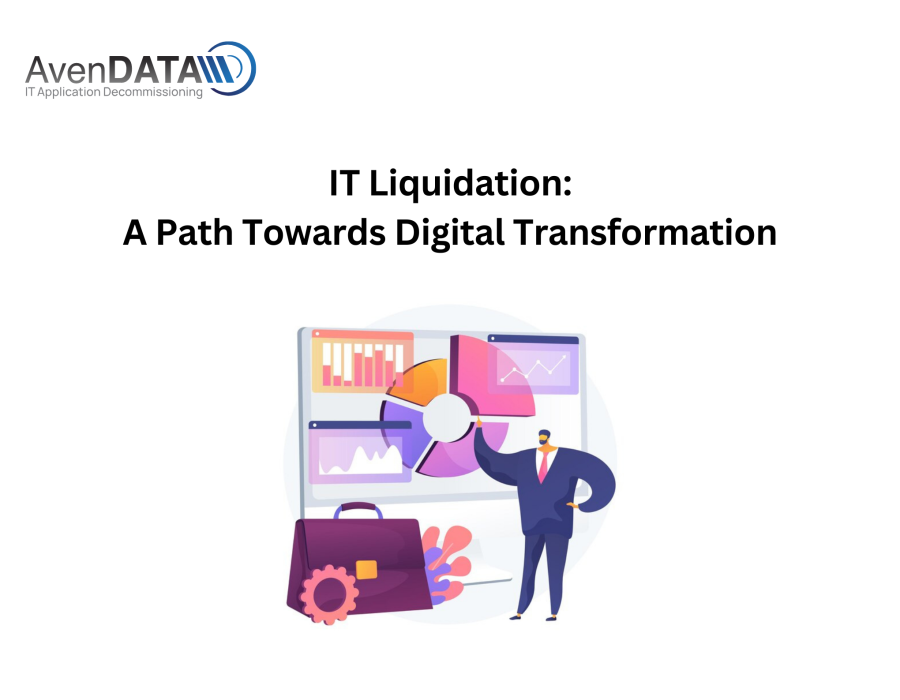Introduction: In the ever-evolving landscape of technology, organizations often find themselves burdened with outdated IT assets that no longer align with their digital transformation goals. IT liquidation, the process of strategically disposing of obsolete or surplus IT equipment, presents an opportunity for organizations to pave the way for digital transformation. In this blog, we will explore the transformative potential of IT liquidation, shedding light on how organizations can leverage this process to optimize resources, drive innovation, and embrace a future-ready IT infrastructure.
Rationalizing IT Assets: IT liquidation serves as a catalyst for rationalizing IT assets by identifying redundant or underutilized equipment. By streamlining the IT asset portfolio, organizations can reduce operational complexity, minimize maintenance costs, and reallocate resources towards modern, innovative technologies that support digital transformation initiatives. Rationalizing IT assets through liquidation sets the stage for a more agile and responsive IT environment.
Capitalizing on Asset Value: IT liquidation allows organizations to capitalize on the residual value of obsolete IT assets. By responsibly disposing of surplus equipment, organizations can unlock capital that can be reinvested in transformative technologies, such as cloud computing, data analytics, cybersecurity, and enterprise mobility. This infusion of capital enables organizations to fuel their digital transformation journey and stay ahead in a competitive business landscape.
Environmental Sustainability: Embracing IT liquidation contributes to environmental sustainability by promoting the responsible disposal and recycling of IT equipment. By partnering with certified e-waste recycling facilities, organizations can ensure that retired IT assets are ethically recycled, minimizing the environmental impact and adhering to regulatory requirements. This commitment to sustainability aligns with corporate social responsibility and enhances the organization’s reputation as a responsible steward of the environment.
Streamlining Legacy Systems: Obsolete IT assets often represent legacy systems that hinder the pace of digital transformation. IT liquidation provides an opportunity to streamline legacy systems, reducing the complexity and technical debt associated with outdated technologies. By decommissioning legacy hardware and software, organizations can create a more agile and adaptable IT environment that is conducive to innovation and rapid adaptation to changing business needs.
Security and Compliance: The retirement of IT assets through liquidation addresses security and compliance concerns associated with outdated equipment. By securely erasing data and ensuring proper disposal of storage devices, organizations mitigate the risk of data breaches and non-compliance with data protection regulations. This proactive approach to IT asset disposition reinforces the organization’s commitment to data security and regulatory compliance.
Embracing Cloud and Mobility: IT liquidation clears the path for embracing transformative technologies such as cloud computing and mobility. By divesting from legacy on-premises infrastructure and hardware, organizations can transition to scalable, cloud-based solutions that offer greater agility, flexibility, and cost efficiency. This shift towards cloud and mobility solutions forms the foundation for digital transformation initiatives that prioritize innovation and seamless user experiences.
Accelerating Innovation: By freeing up resources and capital through IT liquidation, organizations can accelerate their innovation agenda. The capital released can be channeled into investments in emerging technologies, digital platforms, and strategic partnerships that drive innovation and position the organization as a leader in its industry. IT liquidation acts as a catalyst for releasing trapped value and fueling innovative initiatives that shape the organization’s digital future.
Future-Ready IT Infrastructure: Ultimately, IT liquidation paves the way for a future-ready IT infrastructure that aligns with the organization’s digital transformation objectives. By shedding legacy constraints, optimizing resources, and embracing modern technologies, organizations can create an IT environment that is agile, resilient, and capable of supporting the evolving needs of the business. This future-ready IT infrastructure becomes the enabler for digital transformation, empowering the organization to achieve its strategic objectives with confidence.
Conclusion: IT liquidation represents a strategic pathway towards digital transformation, enabling organizations to rationalize IT assets, capitalize on asset value, promote environmental sustainability, streamline legacy systems, address security and compliance, embrace cloud and mobility, accelerate innovation, and build a future-ready IT infrastructure. By embracing the transformative potential of IT liquidation, organizations position themselves to thrive in the digital era, drive innovation, and achieve sustainable growth in an increasingly competitive and dynamic business landscape.
#AvenDATA #Legacysystems #ITlegacysystems #ITliquidation #legacydata






Comments